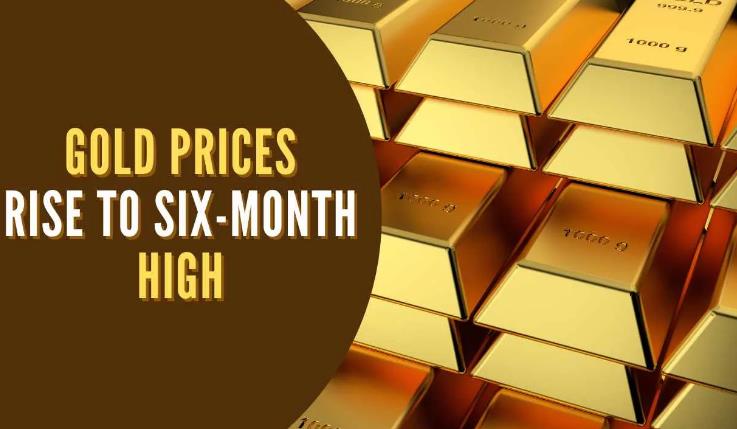Gold prices have surged to their highest level in six months as the conflict between Israel and Hamas in West Asia continues to escalate. The precious metal, which is considered a safe-haven asset in times of uncertainty, has gained more than 8% since the start of the year, crossing the $2,000 per ounce mark on Tuesday.
One of the main reasons behind the rally in gold prices is the weakening of the US dollar, which makes the metal cheaper for other currency holders. The dollar index, which measures the greenback against a basket of six major currencies, has fallen by about 4% since January, as investors expect the Federal Reserve to keep interest rates low and maintain its bond-buying program.

Another factor that is boosting the demand for gold is the rising inflation pressure in the US and other major economies, as the stimulus measures and the vaccine rollouts fuel the recovery from the pandemic. Gold is seen as a hedge against inflation, as it tends to retain its value over time.
Moreover, the geopolitical tensions in West Asia have also increased the appeal of gold as a safe-haven asset, as investors seek to reduce their exposure to riskier assets such as stocks and bonds. The conflict between Israel and Hamas, which began on May 10, has resulted in hundreds of casualties and widespread destruction in Gaza. The presence of US forces in the region and the airstrikes against Iranian targets add another layer of complexity to the situation.
How high can gold go
Some analysts believe that gold prices have more room to rise, as the factors that are supporting the metal are likely to persist in the near term. According to a report by FX Empire, gold prices could reach $2,100 per ounce by the end of the year, as the Fed remains dovish and the inflation expectations remain elevated.
However, some experts also warn that gold prices could face some headwinds, such as a stronger dollar, a faster-than-expected tapering of the Fed’s stimulus, or a resolution of the West Asia conflict. According to a report by Moneycontrol, gold prices could face some resistance at $2,050 per ounce, and could correct to $1,900-$1,850 per ounce in the short term.
What should investors do
Investors who are interested in gold can either buy the physical metal, such as coins and bars, or invest in gold-related instruments, such as exchange-traded funds (ETFs), futures and options, or mining stocks. Each of these options has its own advantages and disadvantages, depending on the investor’s risk appetite, liquidity needs, and cost considerations.
For instance, buying physical gold can provide direct exposure to the metal, but it also involves storage and insurance costs, and may not be easily tradable. Investing in gold ETFs, such as SPDR Gold Shares (GLD), can offer convenience and diversification, but it also involves management fees and tracking errors. Trading gold futures and options, such as those offered by the Multi Commodity Exchange of India (MCX), can offer leverage and flexibility, but it also involves margin requirements and rollover costs. Buying gold mining stocks, such as Barrick Gold (GOLD) or Newmont (NEM), can offer exposure to the metal as well as the company’s performance, but it also involves operational and environmental risks.
Therefore, investors should do their own research and analysis before investing in gold, and consider their financial goals, risk tolerance, and time horizon. They should also keep a close watch on the market trends and the developments in West Asia, as they could have a significant impact on the price of gold.
